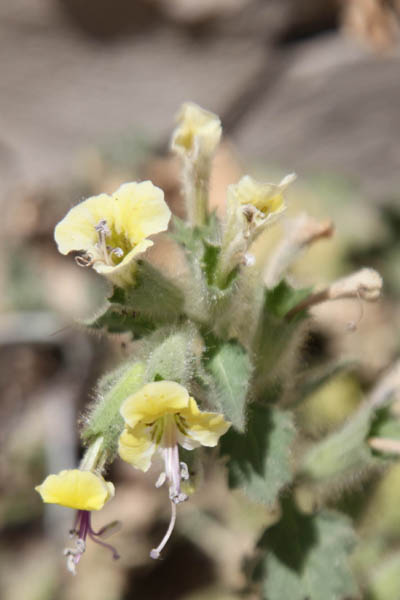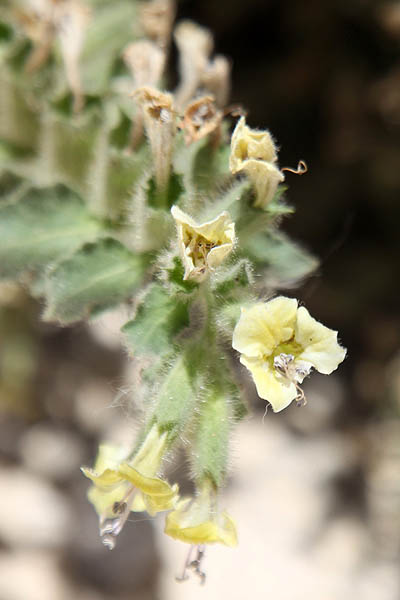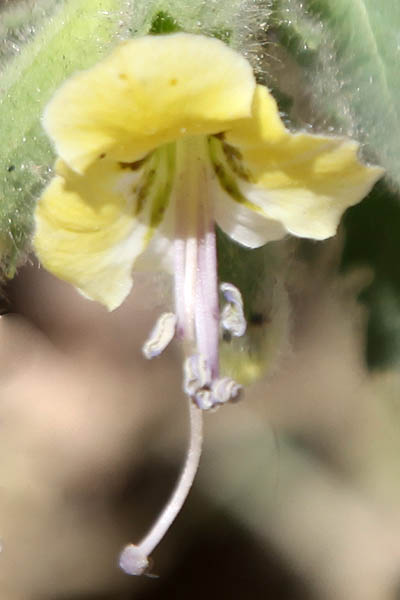Desert henbane,
Hebrew: שיכרון המדבר ,שיכרון מדברי, Arabic: البنج الصحراوي
| Scientific name: | Hyoscyamus desertorum (Aschers. ex Boiss.) Taeckh. | |
| Synonym name: | Hyoscyamus albus desertorum | |
| Common name: | Desert henbane | |
| Hebrew name: | שיכרון המדבר, שיכרון מדברי | |
| Arabic name: | البنج الصحراوي | |
| Family: | Solanaceae, סולניים |

|
| Life form: | Annual | |
| Spinescence: | Flowers | |
| Stems: | Erect | |
| Leaves: | Alternate, rosette, entire, ovate to rhombic rarely cordate based leaves which are covered all over with densely glandular hairs, dentate or serrate margin | |
| Flowers: | Hermaphrodite, yellow, spinescence | |
| Fruits / pods: | Capsules dehiscent by an operculum slightly distal to middle; seeds reniform or discoid, minutely pitted | |
| Flowering Period: | March, April, May | |
| Habitat: | Desert, Thermophilous plants | |
| Distribution: | Semi-steppe shrublands, Shrub-steppes, Deserts and extreme deserts | |
| Chorotype: | Saharo-Arabian | |
| Summer shedding: | Ephemeral |

Derivation of the botanical name: Hyoscyamus, Hyoskyamos, from the Greek hys, hyos, "pig" and kyamos "bean", allegedly, because pigs can eat the herb without damage. desertorum, of the deserts. The Hebrew name: ,שיכרון, shikaron, from Aramaic: שכרונא (= a soporific drink) — whence also Arabic: saykuran ( = henbane) — derived from שכר ( = he got drunk, got intoxicated).
In Israel there are five species of Henbane and the most common one is Hyoscyamus aureus, which we can find in the Western Wall. (see: Western Wall Flowers and Hyoscyamus aureus, Golden Henbane, שיכרון זהוב) It is only mentioned in one place in the Bible (Joshua 15:11), in conjunction with the biblical place-name Shikrona in Judea. Shikrona is the Hebrew word for Henbane. Bible resources:

|